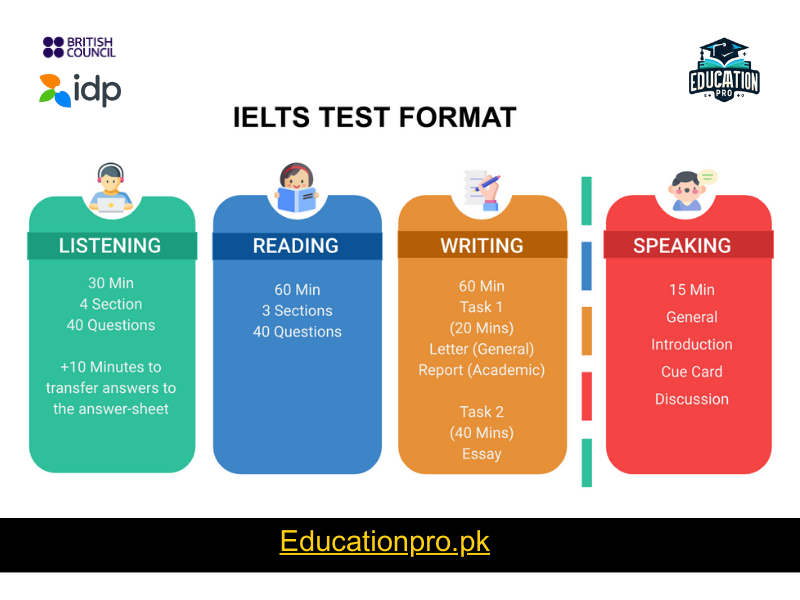The Ultimate Guide to Acing the IELTS Listening Test
Introduction
The International English Language Testing System (IELTS) is a standard test that assesses the language proficiency of non-native English language speakers wishing to live, work, or study in English-speaking environments. The Listening section of the IELTS is a critical component that gauges your ability to understand spoken English in various contexts. This comprehensive guide is tailored for IELTS test-takers, English language learners, international students, academic institutions, and anyone involved in or supporting the pursuit of language proficiency.
Pattern of IELTS Listening Test
The IELTS Listening test follows a consistent format. It is made up of four recorded sections, played once before test-takers must answer a series of questions. The first two sections are set in everyday social contexts, while the last two take place in educational and training settings. This part of the IELTS is designed to evaluate different listening skills, including the ability to understand the main idea and detailed factual information, recognize the opinions and attitudes of speakers, and follow the development of an argument.
Detailed Overview of the IELTS Listening Test Sections
Section 1: Social Context
The first section simulates a conversation between two individuals in a social or transactional context, such as booking a hotel room, inquiring about a service, or planning a gathering. This section tests your ability to grasp specific information like dates, names, places, and times amidst casual conversation.
Section 2: Monologue in a Social Context
In contrast to the first, the second section features a single speaker discussing a non-academic topic. Examples include a tour guide describing a location’s features or a person giving information about a public event. This section evaluates your ability to understand descriptions and extract factual details from a monologue.
Section 3: Educational or Training Context – Conversation
The third section shifts towards a more academic setting, involving up to four speakers. Situations can range from students discussing a project, to academic counseling, or classroom interactions. Here, the test focuses on your ability to recognize opinions, attitudes, and course of action discussed in a group setting.
Section 4: Monologue in an Academic Setting
Finally, the fourth section presents a lecture or talk of an academic nature, delivered by a single speaker. This could be a university lecture or a speech on a general academic topic. This part demands a good grasp of academic language and the ability to follow complex lines of argument or explanations without visual aids.
Each of these sections increases in difficulty, requiring a broad set of listening skills. Test-takers must not only recognize various English accents but also understand different speeds of speech and levels of vocabulary. Familiarity with the format and rigorous practice are key to navigating the subtleties of each section efficiently.
Number of Questions in Each Section
Each of the four sections in the IELTS Listening test consists of 10 questions, making a total of 40 questions for the entire test. The questions are designed to progressively increase in difficulty as the test progresses. This structured format ensures a comprehensive assessment of a candidate’s listening abilities across various contexts and challenges. By the end of the test, candidates will have navigated a diverse range of question types, accentuating the importance of versatile listening skills and adaptive strategies.

Bands Distribution
Scoring for the IELTS Listening test is between bands 1 to 9. Each correct answer receives one point, which is then converted into the IELTS 9-band scale. The accuracy of your answers will significantly influence your band score, making practice and a clear understanding of the test’s requirements crucial for success.

General IELTS Listening Test vs Academic IELTS Listening Test
Unlike the Reading and Writing modules, the Listening test is the same for both the Academic and General Training versions of IELTS. This means all candidates take the same listening test with the same range of question types.
How to Prepare
Preparation is key to success in the IELTS Listening test. Here are some essential steps for preparation:
- Familiarization: Get to know the test format. Understand the types of tasks you’ll face, such as multiple-choice, matching, plan/map/diagram labeling, form/note/table/flow-chart/summary completion, and sentence completion.
- Active Listening Practice: Engage with English language media, such as podcasts, news, documentaries, and series that cover a range of accents and topics.
- Simulate Test Conditions: Practice with IELTS Listening practice tests under timed conditions.
- Expand Your Vocabulary: Build a strong vocabulary across diverse topics. The richer your vocabulary, the better you’ll fare in understanding nuanced dialogues or lectures.
- Hone Note-taking Skills: Often, listening effectively means being able to jot down the key facts swiftly. Practice this skill to avoid being overwhelmed during the actual test.
- Review Analytically: Go over your practice tests to understand why certain answers were incorrect. This will help you identify patterns in your mistakes and adjust strategies accordingly.
Common Mistakes in IELTS Listening Test
Common mistakes include:
- Losing concentration during the audio
- Misunderstanding the question
- Spelling errors
- Not managing time efficiently
- Overthinking simple questions
- Transferring answers incorrectly to the answer sheet
Becoming aware of these pitfalls and actively working to avoid them can make a significant positive difference in your score.
ielts listening practice , ielts exam listening practice , ielts listening mock , ielts listening scoring , ielts listening , ielts listening practice test , british council listening , listening practice test , ielts listening test , ielts listening test online , ielts academic listening practice test , ielts general listening practice test ,ielts 1 listening test 1 , band for ielts listening , ielts listening exam , Educationpro

Frequently Asked Questions
Q: Can I listen to the recording more than once?
A: No, the audio is played only once during the test.
Q: Are accents used in the listening test limited to British English?
A: No, a variety of accents, including Australian, British, American, and Canadian, may be used.
Q: Is there a penalty for incorrect answers?
A: No, you will not be penalized for wrong answers, so it’s better to guess than to leave a blank.
Q: How transfer time is given for writing answers on the answer sheet?
A: At the end of the listening test you have 10 minutes to transfer your answers onto the answer sheet.
Q: Should I use all capital letters for the answer sheet?
A: While it isn’t a requirement, writing your answers in all caps can help prevent unclear handwriting.
Q: Can I write my answers on the question paper?
A: Yes, you can first write your answers on the question paper and then transfer them to the answer sheet during the given time.
In conclusion, a systematic study approach, practical listening exercises, and regular review of common mistakes are invaluable for mastering the IELTS Listening test. Remember, every practice session is a step forward in your listening proficiency. Approach the test with confidence, and believe in your ability to succeed.

